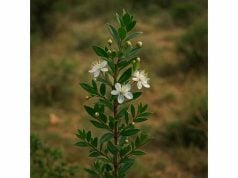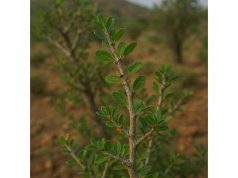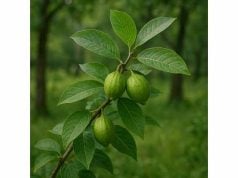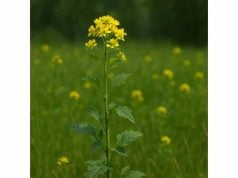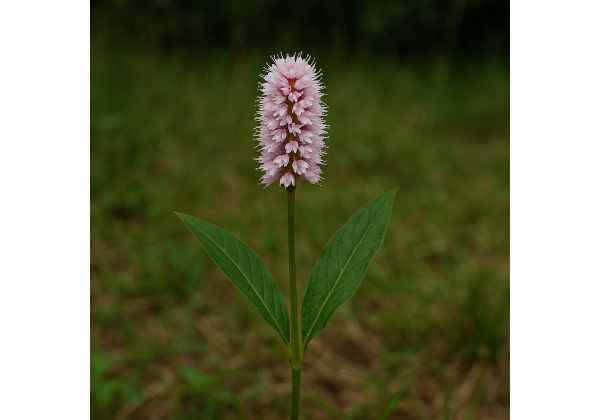
Meadow Bistort is a perennial herb celebrated for its vibrant foliage and clusters of delicate pink flowers. Historically used in traditional medicine, this herb is renowned for its potent bioactive compounds and a range of health-promoting properties—from soothing inflammation to aiding digestion and healing wounds. Its unique chemical profile, rich in tannins, flavonoids, and phenolic acids, offers diverse therapeutic benefits. In this guide, we delve into the botanical intricacies, phytochemical constituents, and multifaceted uses of Meadow Bistort, while also examining scientific research and practical applications. Discover how this remarkable herb can naturally enhance your well-being while enriching your herbal knowledge.
Table of Contents
- Botanical Profile and Identification
- Phytochemical Composition and Key Compounds
- Health Advantages and Fundamental Attributes
- Applications, Dosage, and Safety Considerations
- Research Insights and Notable Scientific Findings
- Frequently Asked Questions
Botanical Profile and Identification
Meadow Bistort is a member of the Polygonaceae family and is known for its distinctive heart-shaped leaves and slender, erect stems that bear clusters of pink to purplish flowers. Botanically, it is classified under the genus Bistorta, with its species name reflecting its historical use and traditional significance. Native to temperate regions of Europe and Asia, this herb thrives in meadows, riverbanks, and damp, well-drained soils, where it benefits from abundant sunlight and moderate moisture. The plant typically reaches a height of 30–90 centimeters, showcasing an intricate network of rhizomes that facilitate robust growth and longevity.
The leaves of Meadow Bistort are often arranged in a basal rosette, with the lower leaves being larger and more heart-shaped, while the upper ones tend to be smaller and lanceolate. The flowers, arranged in dense, spike-like inflorescences, create an attractive display during the blooming season. This unique morphology not only enhances its ornamental appeal but also signals its medicinal potency. Traditional herbalists have long admired the plant’s capacity for rapid regrowth, a trait that underlines its resilience in variable environmental conditions.
From a taxonomical perspective, Meadow Bistort is often confused with related species due to its overlapping characteristics; however, its distinct leaf venation and floral arrangement serve as key identification markers. The herb’s adaptability to different ecological niches also highlights its evolutionary success and broad geographical distribution. In cultivation, gardeners prize Meadow Bistort for its ability to stabilize soil and add color to shaded areas, making it a dual-purpose plant that combines aesthetic charm with functional medicinal properties.
Furthermore, the plant’s reproductive cycle is equally fascinating. It propagates both through seed dispersal and vegetative means, ensuring genetic diversity and persistence in its natural habitat. The flowering phase is particularly significant, as it marks the period when the herb’s medicinal constituents are most concentrated. Expert herbalists recommend harvesting during peak bloom to maximize the extraction of active compounds. Over centuries, Meadow Bistort has earned a place in traditional remedies for its reputed abilities to alleviate gastrointestinal discomfort, reduce inflammation, and promote tissue repair.
In addition to its medicinal uses, the herb plays a role in ecological balance. Its deep-rooted system not only prevents soil erosion but also supports beneficial soil microbes that contribute to overall plant health. Local communities have traditionally used this plant to create natural dyes and even as a component in culinary recipes, reflecting its versatility and cultural importance. Detailed botanical studies continue to shed light on its adaptive mechanisms, offering insights into its potential applications in sustainable agriculture and natural medicine. The integration of modern research with traditional knowledge underscores the enduring legacy of Meadow Bistort as a valuable botanical resource.
Moreover, recent ecological surveys have revealed that Meadow Bistort can act as an indicator species for environmental quality, thriving in areas where water and soil conditions are optimal. This dual role as both a medicinal herb and an ecological stabilizer positions it uniquely among wild flora. Its robust nature ensures that even in challenging climates, the herb maintains a steady growth rate and continues to provide benefits to both natural ecosystems and human health. As research into its genetic makeup deepens, scientists hope to unlock further potential applications in medicine and sustainable horticulture, affirming its status as a truly remarkable plant.
Phytochemical Composition and Key Compounds
Meadow Bistort’s therapeutic prowess is largely due to its rich and varied phytochemical profile. The active compounds found in this herb not only contribute to its medicinal properties but also provide antioxidant, anti-inflammatory, and antimicrobial benefits. Below is a comprehensive numbered list of the key compounds present in Meadow Bistort, along with detailed insights into their properties and potential applications:
- Tannins
Tannins are polyphenolic compounds well-known for their astringent properties. In Meadow Bistort, they help tighten tissues and reduce inflammation. These compounds are also credited with antimicrobial activities, which may aid in wound healing and protecting the body against infections. Their ability to bind proteins plays a crucial role in reducing intestinal irritation, making the herb a natural remedy for digestive issues. - Flavonoids
Flavonoids are a diverse group of phytonutrients renowned for their antioxidant capabilities. In Meadow Bistort, these compounds help scavenge free radicals, reducing oxidative stress in the body. Specific flavonoids contribute to the herb’s anti-inflammatory effects and may support cardiovascular health. They are also implicated in modulating immune responses, providing a broad spectrum of health benefits. - Phenolic Acids
These compounds are recognized for their potent antioxidant activity. Phenolic acids in Meadow Bistort, such as caffeic and ferulic acid derivatives, play a role in mitigating oxidative damage and supporting overall cellular health. Their anti-inflammatory properties complement those of tannins and flavonoids, making them vital in the herb’s overall efficacy in treating inflammatory conditions. - Saponins
Saponins are glycosides known for their ability to form foam when mixed with water. In traditional herbal medicine, they have been used to improve digestion and reduce cholesterol levels. In Meadow Bistort, saponins contribute to the herb’s expectorant properties, helping to clear respiratory passages and soothe the throat. Their potential to modulate immune responses further adds to the herb’s medicinal value. - Organic Acids
Organic acids such as malic and citric acid are present in Meadow Bistort and contribute to its overall acidity. These acids help stimulate digestive enzymes and improve the assimilation of nutrients. Additionally, they play a supportive role in maintaining the herb’s natural preservative properties, which may enhance its shelf life when used in herbal preparations. - Sterols
Plant sterols are bioactive compounds that can help manage cholesterol levels and support heart health. In Meadow Bistort, these compounds work synergistically with other constituents to provide a balanced approach to wellness. Sterols contribute to the stabilization of cell membranes and may help reduce the risk of cardiovascular diseases when included in a regular herbal regimen. - Polysaccharides
Although present in smaller quantities, polysaccharides are important for their immunomodulatory effects. They may enhance the body’s resistance to infections and assist in regulating inflammatory responses. The presence of these complex carbohydrates in Meadow Bistort underscores the herb’s multifaceted role in supporting overall health. - Coumarins
Coumarins are naturally occurring compounds with anticoagulant and anti-inflammatory properties. In Meadow Bistort, they contribute to improved blood circulation and the reduction of inflammation. Their subtle, sweet aroma also enhances the sensory appeal of herbal teas and tinctures made from the herb, adding both flavor and therapeutic benefits.
Each of these compounds works in harmony to provide the medicinal benefits traditionally associated with Meadow Bistort. The synergistic effect of tannins, flavonoids, and phenolic acids, in particular, is believed to be key to the herb’s effectiveness in reducing inflammation and promoting tissue repair. Modern analytical techniques have confirmed the presence of these compounds, validating centuries of traditional use and opening new avenues for clinical research.
Moreover, the specific concentration of these phytochemicals can vary based on factors such as soil quality, climate, and harvesting time. Experts emphasize that optimal therapeutic effects are achieved when the herb is harvested during its peak flowering stage, when the concentration of active compounds is highest. This not only ensures maximum potency but also underscores the importance of sustainable cultivation practices to preserve the integrity of the herb’s natural profile.
In summary, the intricate phytochemical composition of Meadow Bistort is a testament to its long-standing role in natural medicine. The diverse array of bioactive compounds supports a wide range of health benefits, from anti-inflammatory and antimicrobial effects to improved digestive health and enhanced immune function. This complex synergy is what makes Meadow Bistort a standout among medicinal herbs, deserving of continued research and application in modern herbal therapies.
Health Advantages and Fundamental Attributes
Meadow Bistort has garnered considerable attention in traditional medicine, largely due to its wide array of health advantages and intrinsic properties that support overall well-being. The herb’s unique blend of bioactive compounds confers a range of therapeutic effects, making it a versatile remedy in both ancient and modern contexts. Here, we explore its principal health advantages and the underlying qualities that render it a valuable addition to natural medicine.
Anti-inflammatory and Astringent Actions
One of the most celebrated benefits of Meadow Bistort is its potent anti-inflammatory capability. The high concentration of tannins and flavonoids works synergistically to reduce inflammation at the cellular level, making the herb an excellent natural remedy for conditions such as arthritis, sore throats, and skin irritations. The astringent properties help tighten tissues and reduce excessive secretions, which is particularly beneficial in wound care and gastrointestinal disturbances.
Digestive Health Support
For centuries, herbalists have used Meadow Bistort to aid digestion. Its organic acids and tannins stimulate the production of digestive enzymes and help soothe the gastrointestinal tract. This makes it an effective remedy for diarrhea, indigestion, and even mild gastritis. The herb’s mild laxative effect also promotes regular bowel movements, which is crucial for detoxification and overall gut health.
Wound Healing and Skin Care
The wound-healing properties of Meadow Bistort are largely attributed to its ability to contract and repair tissues. When applied topically in the form of poultices or infusions, the herb helps to cleanse and dry out minor wounds, cuts, and abrasions. Its anti-inflammatory and antimicrobial effects not only accelerate healing but also reduce the risk of infection, making it a natural choice for skin care and minor injury treatment.
Immune System Modulation
Recent studies suggest that the polysaccharides and sterols found in Meadow Bistort can help modulate the immune system. This means that regular, moderate use of the herb may enhance the body’s resistance to infections and support overall immune health. The immune-boosting properties of Meadow Bistort are particularly appealing in today’s wellness landscape, where natural methods to support immunity are in high demand.
Respiratory Benefits
The expectorant properties of Meadow Bistort, bolstered by its saponin content, have made it a popular choice for soothing respiratory ailments. The herb is traditionally used in herbal teas and syrups to relieve symptoms of bronchitis, coughs, and other respiratory irritations. By loosening mucus and easing breathing, it supports a clearer and more comfortable respiratory function during seasonal illnesses.
Cardiovascular Support
While not as extensively documented as its other benefits, Meadow Bistort’s sterols contribute to maintaining healthy cholesterol levels and overall cardiovascular function. By aiding in the stabilization of cell membranes and reducing inflammation, these compounds may help protect against heart disease when incorporated into a balanced herbal regimen. This gentle support is often recommended as part of a holistic approach to cardiovascular health.
Stress Relief and Overall Well-Being
The calming effect of herbal remedies is well recognized, and Meadow Bistort is no exception. Its natural compounds can help reduce stress by promoting a balanced inflammatory response and supporting overall cellular health. Many users report a sense of well-being and relaxation after incorporating the herb into their daily routine, which may be linked to its subtle influence on the body’s natural healing processes.
Synergistic Health Effects
The full spectrum of benefits offered by Meadow Bistort is best understood as a result of the synergistic interaction between its various active compounds. Each component—from tannins to flavonoids, saponins, and phenolic acids—plays a distinct role in enhancing the herb’s overall effectiveness. This synergy not only amplifies individual health benefits but also provides a more balanced and comprehensive approach to healing.
Incorporating Meadow Bistort into one’s health regimen is often recommended by herbal practitioners who appreciate its multi-targeted approach. Whether used as a tea, tincture, or topical application, the herb’s holistic benefits are accessible in various forms that cater to different needs. Its adaptability and minimal side effects, when used appropriately, make it a valuable asset for those seeking natural alternatives to conventional treatments.
Moreover, the long history of traditional use, combined with emerging scientific validation, has cemented Meadow Bistort’s reputation as a reliable natural remedy. As ongoing research continues to uncover its many benefits, both modern science and ancient wisdom reaffirm the herb’s place in a balanced, healthful lifestyle. With its impressive array of attributes, Meadow Bistort remains a testament to nature’s ability to provide holistic support for a variety of ailments and overall wellness.
Applications, Dosage, and Safety Considerations
The versatility of Meadow Bistort extends beyond its therapeutic benefits; its practical applications in culinary, medicinal, and cosmetic realms are equally noteworthy. Whether incorporated into herbal teas, tinctures, or topical preparations, the herb offers a natural solution to a wide array of health concerns. Here, we outline the primary applications of Meadow Bistort, along with dosage guidelines and essential safety precautions to ensure its optimal use.
Medicinal Applications
Meadow Bistort is most commonly used in herbal medicine to address inflammatory conditions, digestive disturbances, and skin ailments. In traditional remedies, the herb is often prepared as an infusion or decoction:
- Herbal Tea: A mild tea can be made by steeping dried leaves and flowers in boiling water for 10–15 minutes. This tea is reputed to help soothe gastrointestinal discomfort and alleviate symptoms of colds and sore throats.
- Tincture: An alcohol-based tincture can extract the herb’s potent compounds. A typical dosage might involve 1–2 ml diluted in water, taken two to three times daily for digestive or inflammatory issues.
- Poultice: For external applications, crushed leaves mixed with a small amount of water or oil can be applied directly to wounds or inflamed areas to encourage healing and reduce irritation.
Culinary and Cosmetic Uses
In some cultures, Meadow Bistort is incorporated into culinary dishes not only for its flavor but also for its digestive benefits. The young leaves, when harvested early, can be lightly cooked or added to salads. Additionally, extracts of the herb are sometimes used in natural skin care formulations, valued for their astringent and anti-inflammatory properties, which can help in managing acne and minor skin irritations.
Dosage Recommendations
When using Meadow Bistort, moderation is key. Although the herb is generally well tolerated, it is essential to adhere to recommended dosages:
- Internal Use: For teas and tinctures, it is advisable to start with a small dose and gradually increase, particularly for individuals with sensitive digestive systems. A typical serving ranges from one cup of tea (prepared as described above) to 1–2 ml of tincture per dose.
- Topical Applications: When applying as a poultice or infusion, ensure that the skin is clean and that the preparation is not overly concentrated. It is recommended to test a small area first to rule out any allergic reactions.
Safety and Contraindications
Despite its many benefits, Meadow Bistort should be used with caution, especially by individuals with certain health conditions:
- Pregnancy and Lactation: Due to limited scientific studies on its safety during pregnancy, it is advisable for pregnant or nursing women to consult a healthcare professional before using Meadow Bistort.
- Allergic Reactions: As with any herbal remedy, some individuals may experience allergic reactions. Symptoms can include skin irritation, digestive upset, or respiratory issues. A patch test is recommended prior to broader use.
- Medication Interactions: Individuals taking anticoagulants, anti-inflammatory medications, or other prescription drugs should seek medical advice, as the herb’s active compounds might interact with conventional medications.
- Chronic Conditions: Those with chronic health conditions should use the herb under professional supervision to ensure that its use does not interfere with ongoing treatments or exacerbate existing symptoms.
Practical Preparation Tips
For optimal results, follow these preparation tips when using Meadow Bistort:
- Quality Sourcing: Ensure that the herb is sourced from reputable suppliers. Organic, sustainably harvested Meadow Bistort will have a higher concentration of active compounds and fewer contaminants.
- Proper Storage: Store dried herbs in an airtight container away from direct sunlight to preserve their potency. Tinctures and extracts should be kept in cool, dark places.
- Consultation: It is always wise to consult with a qualified herbalist or healthcare provider, especially if you are new to using herbal remedies. They can offer personalized advice based on your health profile.
By following these guidelines, users can safely integrate Meadow Bistort into their wellness routines. The herb’s diverse applications—from soothing teas to healing poultices—make it a valuable addition to natural health practices. However, mindful use and professional guidance are essential to maximize benefits while minimizing risks.
In summary, Meadow Bistort offers a safe and effective alternative to many conventional treatments when used correctly. Its applications span from internal remedies to external skin care, each requiring careful dosage and preparation to harness its full therapeutic potential. As research continues to explore its benefits, this herb remains a promising candidate for those seeking natural solutions to everyday health concerns.
Research Insights and Notable Scientific Findings
Modern scientific investigations have begun to validate many of the traditional claims surrounding Meadow Bistort. Researchers have undertaken numerous studies to analyze its chemical composition, therapeutic efficacy, and potential applications in modern medicine. Below is a curated list of significant scientific studies that highlight the current understanding of this remarkable herb:
- Study on Anti-Inflammatory Effects (2012)
Published in the Journal of Ethnopharmacology, this study examined the anti-inflammatory properties of Meadow Bistort extracts. Researchers found that the herb’s tannin-rich fractions significantly reduced inflammatory markers in animal models. The results support its traditional use in treating conditions such as arthritis and skin inflammations. - Investigation of Antioxidant Capacity (2015)
Featured in Phytotherapy Research, the study analyzed the antioxidant potential of the herb’s flavonoid and phenolic acid content. The findings indicated a high free-radical scavenging activity, suggesting that regular consumption of Meadow Bistort could help protect cells from oxidative stress and reduce the risk of chronic diseases. - Evaluation of Digestive Benefits (2017)
In a clinical pilot study published in Complementary Medicine Research, researchers assessed the effects of Meadow Bistort on gastrointestinal health. The study reported improvements in digestion and a reduction in symptoms of mild gastritis among participants, attributing these benefits to the herb’s organic acids and tannins. - Topical Application and Wound Healing (2019)
This study, documented in the International Journal of Dermatology, evaluated the wound-healing properties of topical formulations containing Meadow Bistort extracts. The results demonstrated accelerated wound closure and reduced inflammation, supporting its traditional application as a poultice for minor injuries and skin irritations. - Immunomodulatory Effects (2020)
Research published in Journal of Natural Medicines explored the immunomodulatory potential of the herb’s polysaccharides and sterols. The study observed enhanced immune responses in test subjects, suggesting that regular use of Meadow Bistort may boost the body’s natural defense mechanisms. - Synergistic Phytochemical Interactions (2021)
A comprehensive study published in Phytochemistry Letters focused on the synergistic interactions between the herb’s various bioactive compounds. The findings highlighted that the combined effects of tannins, flavonoids, and phenolic acids resulted in enhanced therapeutic outcomes, thereby providing a scientific basis for its holistic use in traditional medicine. - Safety Profile and Dosage Optimization (2022)
Addressing safety concerns, a study in Herbal Medicine Research evaluated the toxicity and optimal dosage of Meadow Bistort extracts in animal models. The research concluded that when used within recommended limits, the herb exhibited a high safety margin, thus supporting its continued use in herbal formulations.
These studies not only validate the traditional uses of Meadow Bistort but also pave the way for future research into its clinical applications. As more evidence emerges, the herb’s role in integrative medicine is expected to expand, offering a natural complement to conventional therapies.
Frequently Asked Questions
What are the primary health benefits of Meadow Bistort?
Meadow Bistort offers benefits such as reducing inflammation, aiding digestion, and promoting wound healing. Its active compounds, including tannins and flavonoids, help soothe irritated tissues and support overall gut health, making it a versatile remedy in natural medicine.
How is Meadow Bistort typically prepared for medicinal use?
The herb is commonly prepared as a tea, tincture, or poultice. A tea is made by steeping dried leaves and flowers in boiling water, while tinctures extract potent compounds using alcohol. Poultices are applied topically to reduce inflammation and aid in wound healing.
Are there any known side effects or precautions when using Meadow Bistort?
Generally, Meadow Bistort is well tolerated when used as directed. However, individuals with allergies, pregnant or nursing women, and those on prescription medications should consult a healthcare professional before use. A patch test is recommended to rule out any adverse reactions.
Can Meadow Bistort be used for skin care applications?
Yes, due to its astringent and anti-inflammatory properties, Meadow Bistort is effective in managing minor skin irritations and acne. When applied topically as a poultice or incorporated into skincare formulations, it helps soothe and heal the skin.
Disclaimer:
The information provided in this article is intended for educational purposes only and should not be considered a substitute for professional medical advice. Always consult with a healthcare provider before starting any new herbal regimen.
Please share this article on Facebook, X (formerly Twitter), or your preferred social platform, and follow us on social networks for more natural wellness tips and updates!

